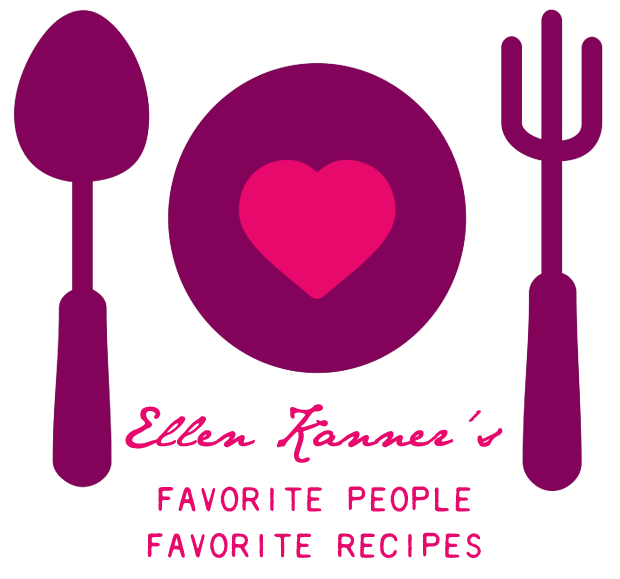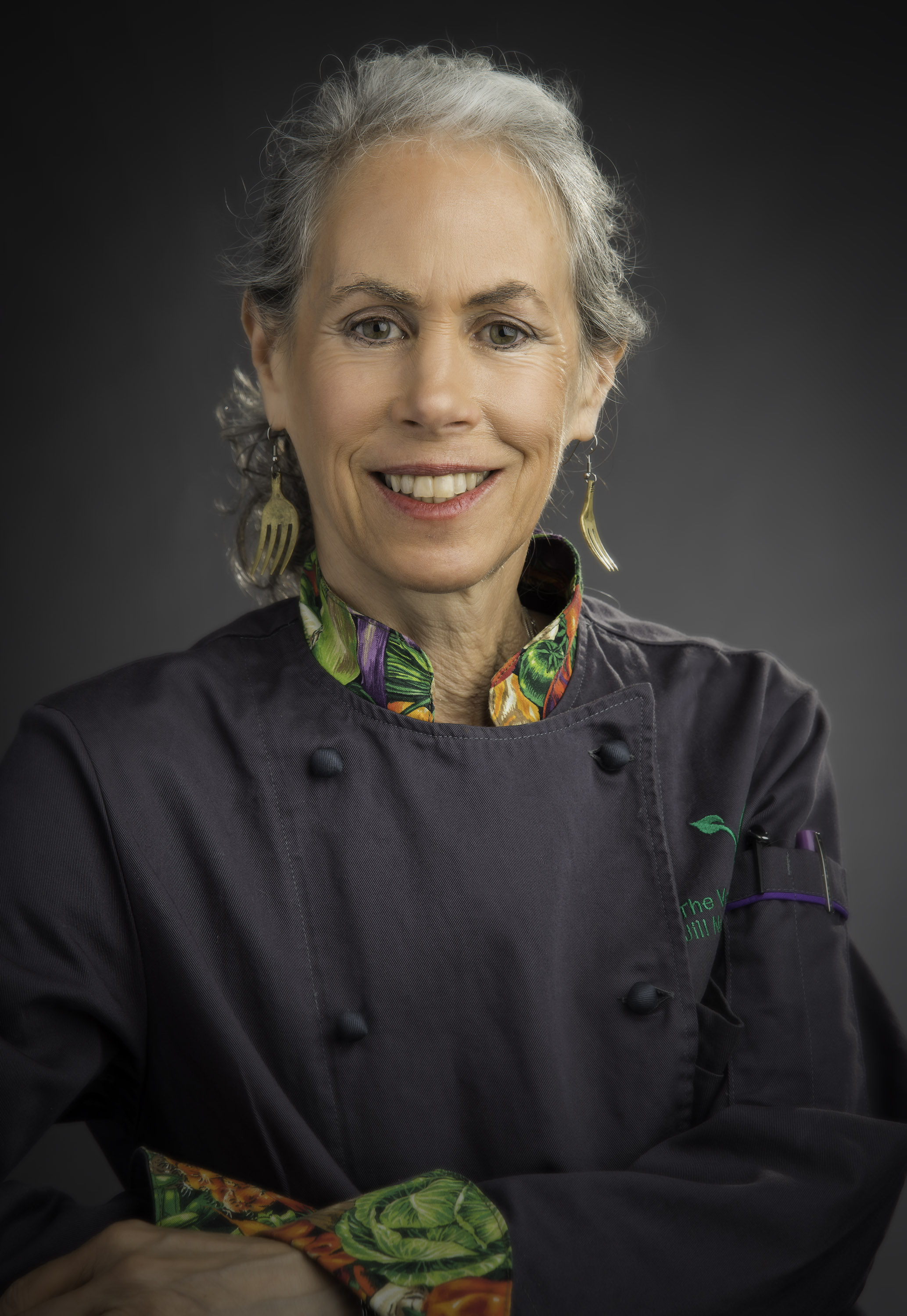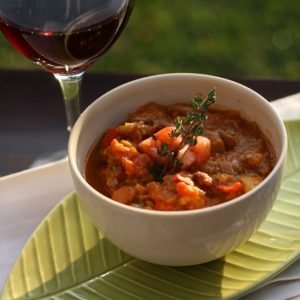My Favorite People, My Favorite Recipes: Jill Nussinow
 Among Jill Nussinow’s day jobs, she’s a registered dietitian, culinary instructor, author of cookbooks including The New Fast Food and pressure cooker pro. First and foremost, though, she is queen — the Veggie Queen.
Among Jill Nussinow’s day jobs, she’s a registered dietitian, culinary instructor, author of cookbooks including The New Fast Food and pressure cooker pro. First and foremost, though, she is queen — the Veggie Queen.
Your inspired source for plant-based eating, Jill combines a royal love of produce with a pragmatic approach.“Eating vegetables is only healthy if they make it to your mouth,” she says. Pressure cookery helps her get vegetables to your mouth faster and easier than ever, with fabulous results. She demystifies cooking, but more than that, Jill has a generous way about her — she wants you to succeed. She’ll help you give vegetables the royal treatment. No wonder she’s queen — and a benevolent one.
The Veggie Queen bestows a special honor on us with her exclusive autumn sunset stew recipe — it’s as sumptuous and warming as she is. Long live the queen.
![]()
Feeling Pressure for the Holidays? The Queen is Here to Help
 The holidays are upon us. Which adds to cooking pressure. Breathing can help you feel more centered. So can learning to use a pressure cooker.
The holidays are upon us. Which adds to cooking pressure. Breathing can help you feel more centered. So can learning to use a pressure cooker.
I got my start pressure cooking lentil soup for my son Shane when he was three years old. My first love was the stove top pressure cooker. I now also use electric pressure cookers such as the Instant Pot DUO or Fagor LUX. I love teaching pressure cooking because most people, even inexperienced cooks, can do it.
I have been teaching pressure cooking for more than two-thirds of my thirty-year teaching career. As a Registered Dietitian, I started out teaching weight management and nutrition, since those seemed like a natural fit. It turned out that nutrition was too dry. My students weren’t grasping all the math and science. When I’d discuss folic acid or calcium, they would get a glazed-over look. So I naturally moved into teaching cooking.
I started teaching cooking at a local college, at corporations and then cooking schools. The skills were so practical and I could engage my students easily. I didn’t have to mention the nutrition attributes of kale or broccoli but could show people how to cook them so they’d want to eat them. Voila, I found my calling. Even in 1986, I was teaching vegan cooking but it wasn’t called that. My first menu had Orange Glazed Tempeh and Tofu Chocolate Mousse. People liked it. I wanted to do more. In 1989, I moved to Northern California, started teaching nutrition at Santa Rosa Junior College for a year or two and then moved into the culinary department.
I have been teaching cooking there ever since, as well as in the community and at cooking schools. I say I will teach anywhere that people will pay me, and that’s not far from the truth. I have taught at magical cooking schools like La Cocina Que Canta at Rancho La Puerta in Tecate, Mexico, I have taught in fields and at farms. I can teach on a card table. I’ve learned to adapt and “make do” but the one constant for me is always starting with the best raw ingredients that I can. I say, “Your food will never taste better than the ingredients with which you start. If you buy industrial organic produce from Costco, then that’s what you have, no matter how you seek to transform it.”
I am not knocking this produce and prefer it to conventional but when possible, I like to buy what is fresh and in season, directly from the farmer when I can. I’m particular about produce. My tagline is Inspiring Ideas for Plant-Based Eating. I am particular about produce. I’m known as The Veggie Queen, after all.
Armed with a pressure cooker or two (I have too many to count), I can make fast and delicious meals. Imagine soaked beans cooked in less than 30 minutes from start to finish, cooked lentils in less than 20 minutes, broccoli in just a minute or two, vegetable stock in less than an hour, brown rice in half the time. All food requires liquid to cook. Or you can use your pressure cooker to steam food — not my preferred method for most cut up food, but it works magic with whole squash, sweet, or regular, potatoes or beets.
What I have discovered, though, is that more experienced cooks think that it ought to be as easy as their other cooking and they fail to read the directions. Pressure cooking is all about science and math. This means that I am almost back to teaching nutrition, but there is food at the end which motivates most people to learn. I have written two pressure cooking cookbooks The New Fast Food and Vegan Under Pressure and have YouTube videos to help people learn how to pressure cook. Twenty years into teaching people how to pressure cook, I am still amazed at the results from pressure cooking: bright food with good texture in just a short time.
Here I share one of my favorite comforting pressure cooker recipes which might be just what you need at this time of year.
Follow The Veggie Queen ![]() @theveggiequeen,
@theveggiequeen, ![]() @theveggiequeen
@theveggiequeen ![]() @theveggiequeen.
@theveggiequeen.
![]()
Autumn Sunset Stew
You can use any vegetables that are fresh in the fall for this gluten-free recipe. It is highly adaptable and very delicious. Season it any way that you like. Here I use thyme and smoked paprika but use Herbs de Provence, chili powder or curry – it’s your call. 2 minutes high pressure; natural pressure release for 10 minutes; 3 minutes high pressure, natural pressure release.Ingredients
- 1 tablespoon olive or other oil optional
- 1 –2 teaspoons smoked paprika pimentón or chipotle powder
- 1 onion diced
- 1 medium red pepper diced
- 3 –4 cloves garlic minced
- 1 cup dry red pinto or black beans, soaked overnight
- 1 cup diced firm tofu optional
- ½ cup vegetable broth
- ½ cup diced potatoes any color
- 1 cup diced sweet potato or winter squash or one more cup if eggplant is not in season
- 1½ cups chopped eggplant if in season
- 2 sprigs fresh thyme or other herbs
- 2 cups chopped fresh or canned tomatoes
- 1 teaspoon salt
Instructions
Notes
©2016, Jill Nussinow, MS, RD from The New Fast Food cookbook


Leave a Reply